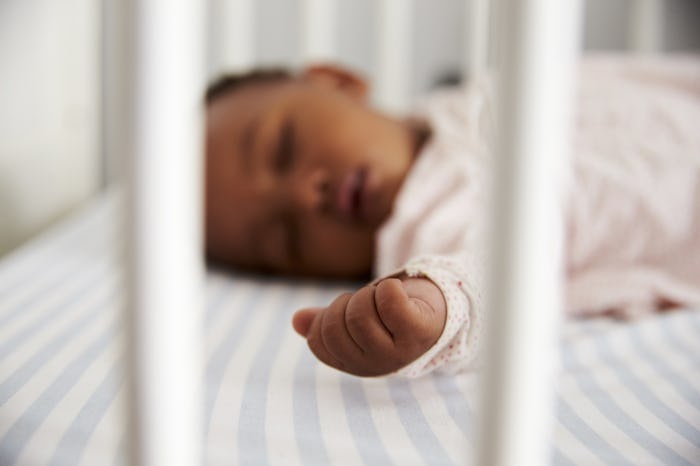Life
Here’s Proof The 'March For Life' Doesn’t Actually Care About Kids' Lives
On Friday, thousands of anti-abortion protesters will convene at the National Mall in Washington, D.C. to attend the nation’s largest annual event for pro-lifers: the March for Life. According to Vox, the event has been held each year since 1974 (the one-year anniversary of the Supreme Court’s Roe v. Wade decision) as a way of rousing anti-abortion advocates — and as part of an ongoing push to overturn the ruling. The slogan for this year’s event, “a voice for the voiceless,” is a nod to how the pro-birth movement characterizes its concern for the unborn; using the hashtag #LoveSavesLives, supporters on social media are pushing messages about the need to protect pregnancies. But the March for Life doesn’t actually care about kids lives. If it did, #LoveSavesLives supporters would be speaking out about any of the issues currently under debate in Congress and in the Trump administration that could actually significantly harm millions of kids right now. But they’re not, and that’s telling.
The platform for the annual March for Life hasn’t much changed in the 40 years since the first gathering, Vox reported. Though interest has expanded a bit in some years to include right-to-die policies and causes related to certain disabilities, the primary focus of the event has always been abortion.
Now that Donald Trump is president, anti-abortion leaders have organized their 2018 March around the promises he made as a candidate — wins pro-life groups have wanted for decades: defunding Planned Parenthood, permanently banning federal money for abortion, and overturning Roe v. Wade, the Washington Post reported this week.
But this year, the March is happening at a crucial time in Washington, as members of Congress are scrambling to come to a budget agreement that keeps the government running past midnight on Friday. Many of the issues under debate could have a direct impact on millions of children and their families. If the March for Life was about protecting the lives of children, here are the things you might find in its platform.
Support For DACA And DREAMers
One of the major — and most contentious — issues at the center of the budget negotiations in Congress is the fate of the DREAMers, the 2 million young people brought to the United States illegally as children. Some young immigrants had secured legal status during the Obama Administration under the Deferred Action for Childhood Arrivals program. But Trump ended the DACA program, leaving its recipients in danger of deportation. Nearly 30 percent of DACA recipients are literally still children themselves (age 16-20), and another 25 percent of DREAMers have children who are U.S. citizens. The futures of hundreds of thousands of kids will be affected by what Congress ultimately decides regarding DACA, but that issue is missing from the pro-life agenda.
A Call For Lawmakers To Reauthorize CHIP
In October 2017, Congress allowed funding to run out for a health insurance program covering 9 million children in low- and moderate-income families. Authorized with bipartisan support in 1997, the Children’s Health Insurance Program — or CHIP — has been credited with lowering the percentage of uninsured kids in the United States from 14 percent when it started to less than 5 percent today, according to the Washington Post. If Congress fails to reauthorize CHIP (either as part of the stopgap budget deal or through a stand-alone extension, as Trump supported recently), some states could start running out of funding to cover checkups, immunizations, and emergency services for children as early as Friday — the same day as the March for "Life," Vox reported.
Protecting Safety Net Programs
Late last year, Trump signed his first major piece of legislation since entering office: a resoundingly unpopular tax bill that independent analysts estimate will exacerbate wealth inequality by skewing any tax savings towards America’s uber-rich. But the impact will be far worse than that, when it comes to the millions of kids lifted out of poverty because of food stamps, Medicaid, and other safety net programs. Republican leaders have already signaled plans to make deep cuts to anti-poverty programs in order to cover the $1.5 trillion deficit left by their tax package, according to the Post. Put bluntly, millions of children could go hungry without federal nutrition benefits, according to the National Center for Children in Poverty, and millions more will lose financial support if their parents and caretakers no longer receive Social Security.
Staying silent on these and other issues that threaten children in this country (from the water poisonings in Flint, Michigan to the disappearance of maternity services in rural communities) speaks volumes about the true motives behind the March For Life, and really, about the entire anti-abortion movement. It shows that this movement is about birthing children, not giving them their best chance at life — and certainly not about protecting their health and safety after being born.
But this is more than just a missed opportunity to galvanize support on an agenda that actually protects children. With popular support for access to safe, legal abortion at an all time high, it's quite literally a lost cause. And it's time we start calling the anti-abortion movement out for what it is: a mission to curtail women's rights by forcing them to give birth — then abandoning them and their children afterwards.
Check out Romper's new video series, Romper's Doula Diaries:
Watch full episodes of Romper's Doula Diaries on Facebook Watch.
